







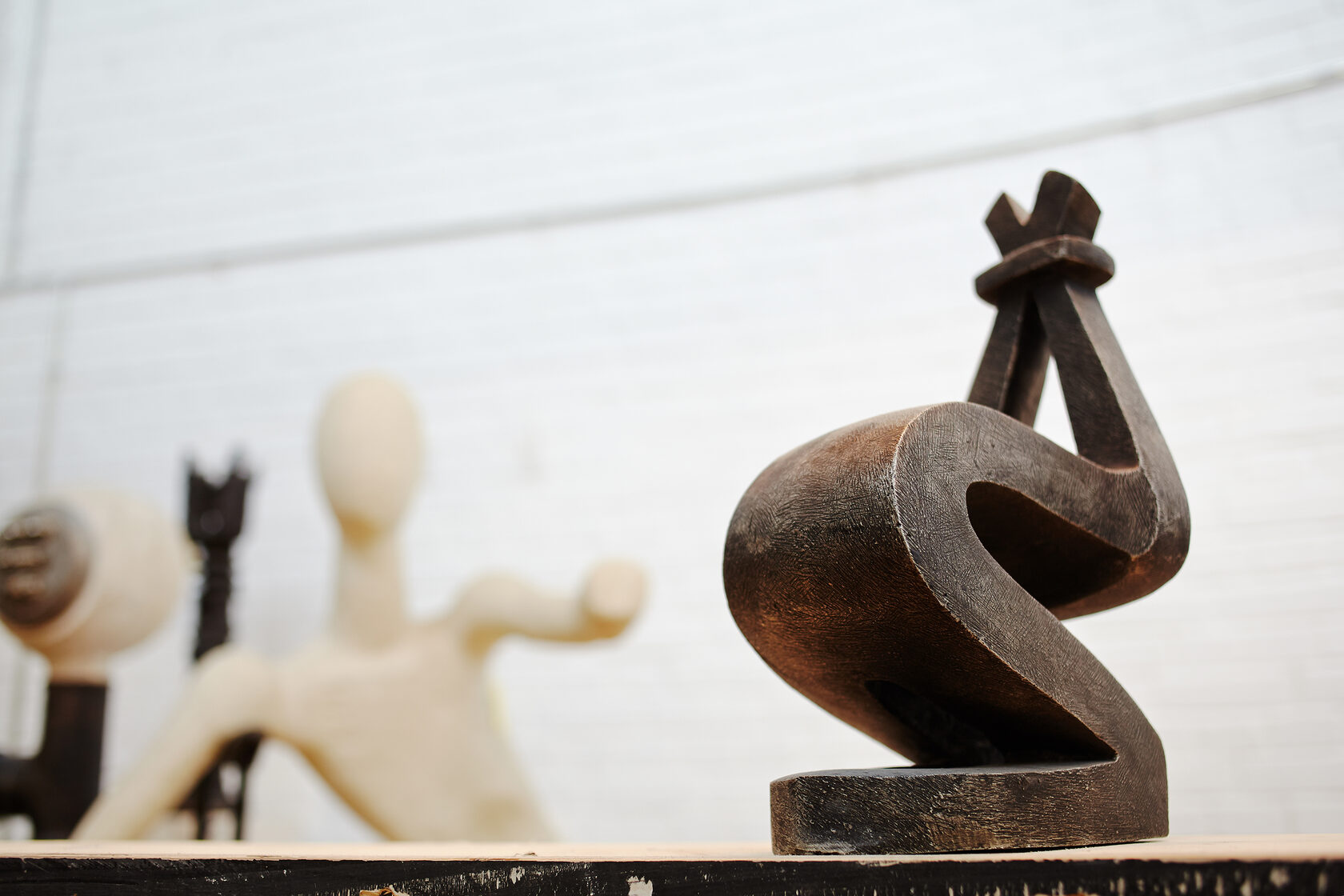
War and peace
of Vadim Sidur
of Vadim Sidur
Personal & Biography
Story
The exhibition addresses eternal issues of universal human values, understandable to everyone, regardless of nationality and age. The sculptor’s works presented in the project depict the horror of war and violent death, the looming danger of a global environmental catastrophe, the search for harmony in a collapsing world, admiration for the creative power of human genius and the greatness of human feelings. Sidur's works make you look at the world around you differently, provide an opportunity to deeply analyze what is happening around you, allow you to look into the future and, perhaps, change it for the better
Vadim Sidur was born in 1924 in Yekaterinoslavl. In 1943, after graduating from a machine gun school, he was sent to the Third Ukrainian Front, where he received a severe wound in the face. As a result of a terrible wound, the future sculptor for a long time balanced between life and death.
Recovery became a "second birth" for the artist. After the war Sidur devoted himself to art. Later he recalled: "There was a miracle of resurrection, and I stayed alive. Sometimes it even seems to me that it was predestined so that I could eventually create 'Monument to the Victims of Violence', 'Treblinka', 'Monument to the Victims of Bombs'."
Recovery became a "second birth" for the artist. After the war Sidur devoted himself to art. Later he recalled: "There was a miracle of resurrection, and I stayed alive. Sometimes it even seems to me that it was predestined so that I could eventually create 'Monument to the Victims of Violence', 'Treblinka', 'Monument to the Victims of Bombs'."
The distinctive language and metaphysical tension of the works, which contain the confrontation between violence and love, war and the supreme joy of peaceful life - these undoubtedly deeply personal and felt elements of Sidur's own work determined not only the now widely recognized cultural significance of his legacy, but also the tragedy of his creative destiny. The impossibility of abandoning his own artistic vision, which he had suffered during the war and the hardships of post-war life, in favor of the ideological conjuncture was the reason why the sculptor's works were practically never exhibited in the Soviet Union during his lifetime.
Several of Sidur's most important works were installed in Germany back in the 70s, and his exhibitions, in addition to the FRG, were also held in the USA, Italy, Australia, Switzerland, Great Britain and a number of other Western countries. However, these events took place without the participation of the author, who never left the USSR. Widespread fame and recognition in his homeland, as often happens, came to the artist after his death in 1986. A year later, a large retrospective exhibition of his works opened in Moscow, not far from the Perovo metro station. And two years later - in 1989 - against the backdrop of undying interest in the sculptor’s work, a museum named after him began operating in the same building
Several of Sidur's most important works were installed in Germany back in the 70s, and his exhibitions, in addition to the FRG, were also held in the USA, Italy, Australia, Switzerland, Great Britain and a number of other Western countries. However, these events took place without the participation of the author, who never left the USSR. Widespread fame and recognition in his homeland, as often happens, came to the artist after his death in 1986. A year later, a large retrospective exhibition of his works opened in Moscow, not far from the Perovo metro station. And two years later - in 1989 - against the backdrop of undying interest in the sculptor’s work, a museum named after him began operating in the same building
Project
Personal & Biography
Type
Sidur museum, Council of Europe
Place
Strasbourg, Luxemburg, Berlin, Moscow, St. Petersburg
Address
Strasbourg, Luxemburg, Berlin, Moscow
MEA Manege
Initiator
Tatyana Soltanovskaya
Curator
500 – 1 200 sq.m
Area
>50 pieces
Number of exhibits
Peter Tolpin, Anna Kaydanovskaya,Vasily Kondrashov
Team
Peter Tolpin, Anna Kaydanovskaya
Ilya Ivanov, Eduard Gladkov, Denis Shchepinov
Photo
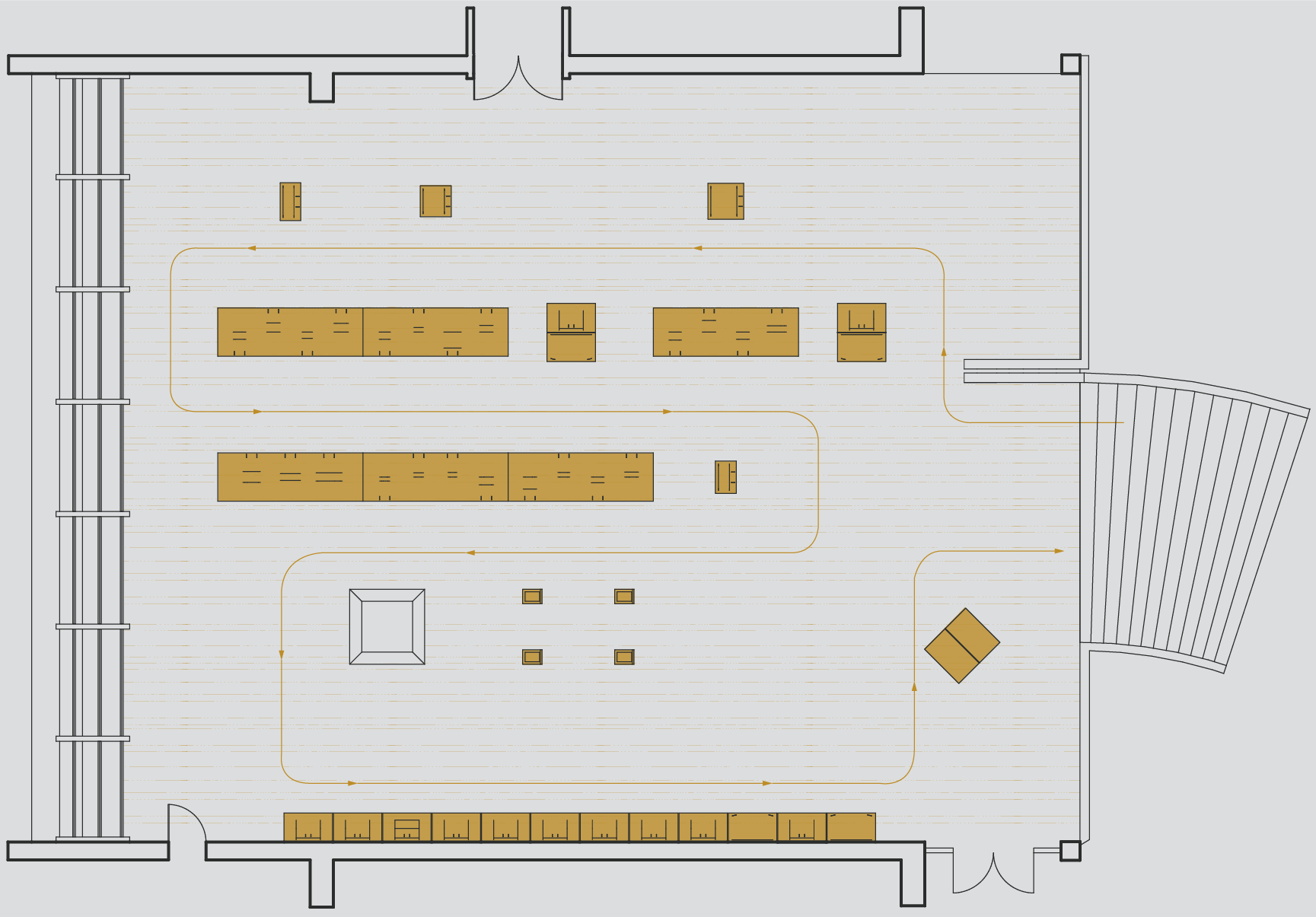
Temporary exhibition plan (Council of Europe, Strasbourg)
«Vadim Sidur’s works are often compared in importance to such famous sculptors as Henry Moore, Constantin Brancusi. But despite the fact that even during Sidur’s lifetime, audiences and critics warmly accepted his work, outside the USSR his works and name are not so well known to art connoisseurs. We hope that our project will serve to correct this historical injustice»
CEO of the Manege Association, Irina Tolpina
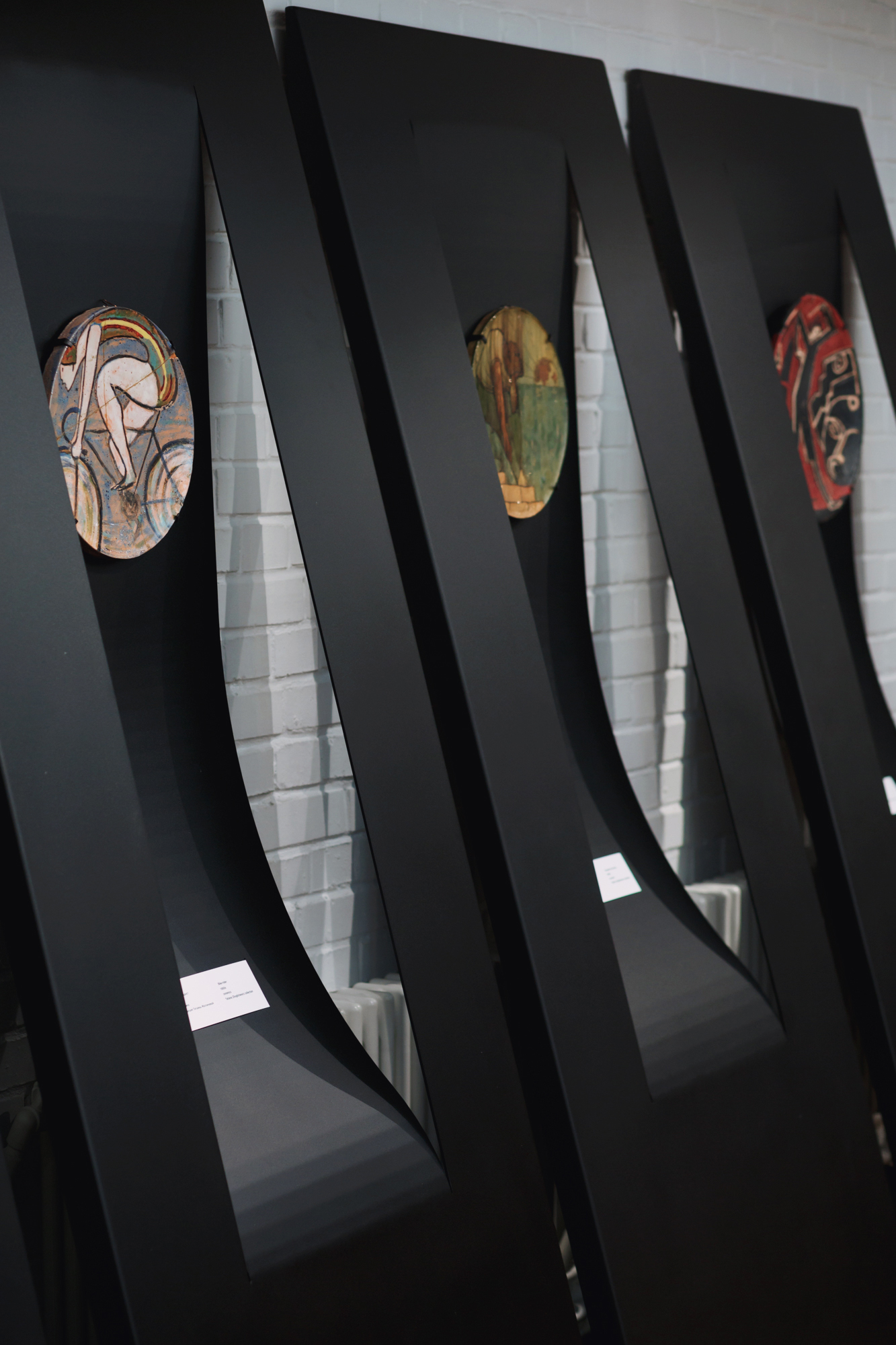
«The exhibition addresses art that has long been in the “shadow” of official culture. This is important not only as a step towards restoring the intellectual heritage of the Soviet period, but also as a study of the connections of modern culture with the tradition laid down by the classics of nonconformism. We hope that the visitor will follow this dialogue and expand their vision of Russian art»
CEO of the Manege Association, Irina Tolpina
The first venue of the project's tour program was the Council of Europe in Strasbourg. Many of the artist’s works seem to illustrate the articles of the Convention for the Protection of Human Rights and Fundamental Freedoms - the right to life, the prohibition of torture, the right to liberty and security of person, respect for private and family life, freedom of thought and conscience

Temporary exhibition axonometry (Council of Europe, Strasbourg)
«His works were often called formulas. And indeed it is. He even has a work called “Formula of Sorrow.” It stands in one of the districts of St. Petersburg in the city of Pushkin, former Tsarskoye Selo. These are formulas, formulas of happiness, sorrow, memory»
Сurator, Tatyana Soltanovskaya
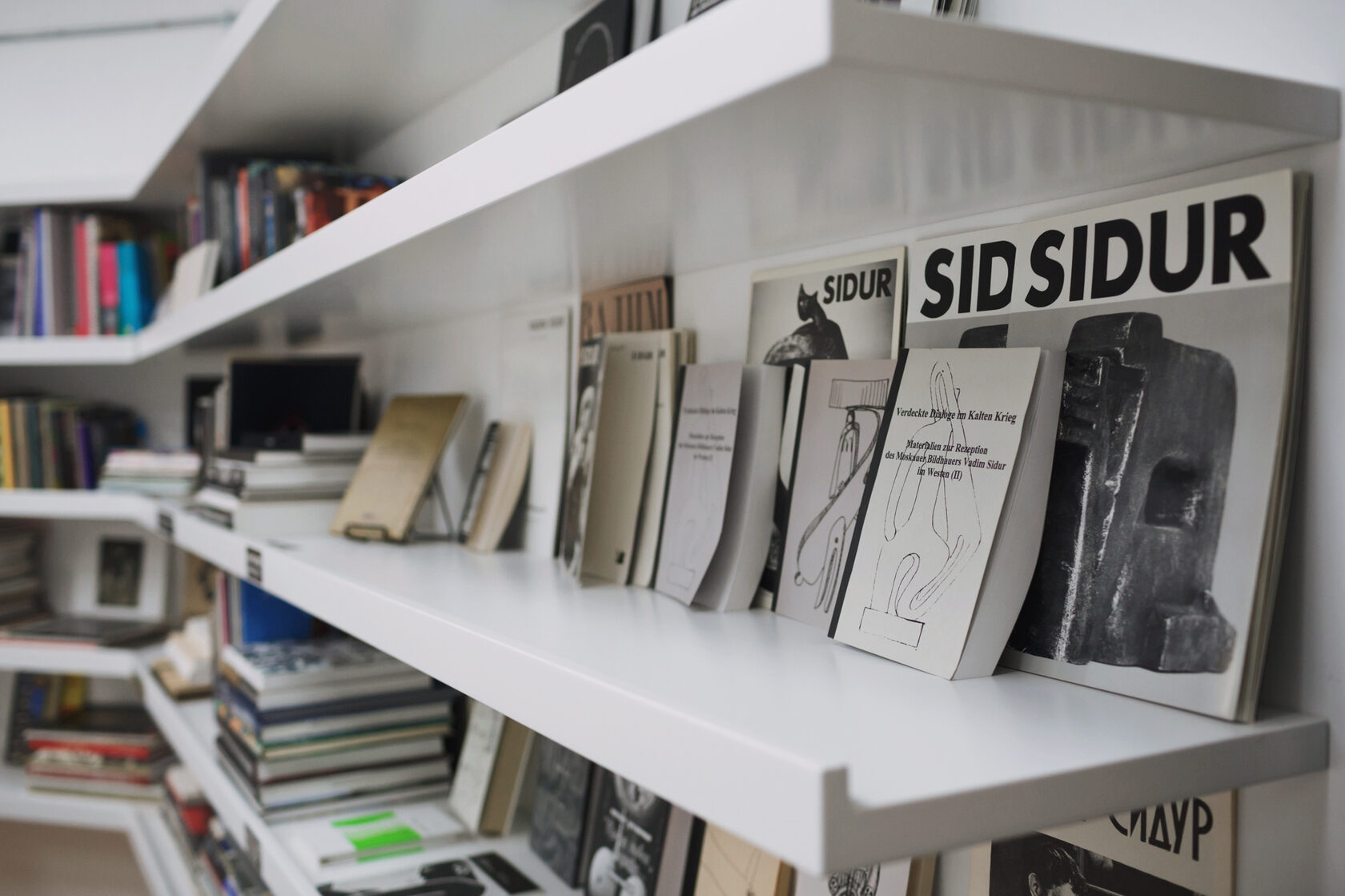
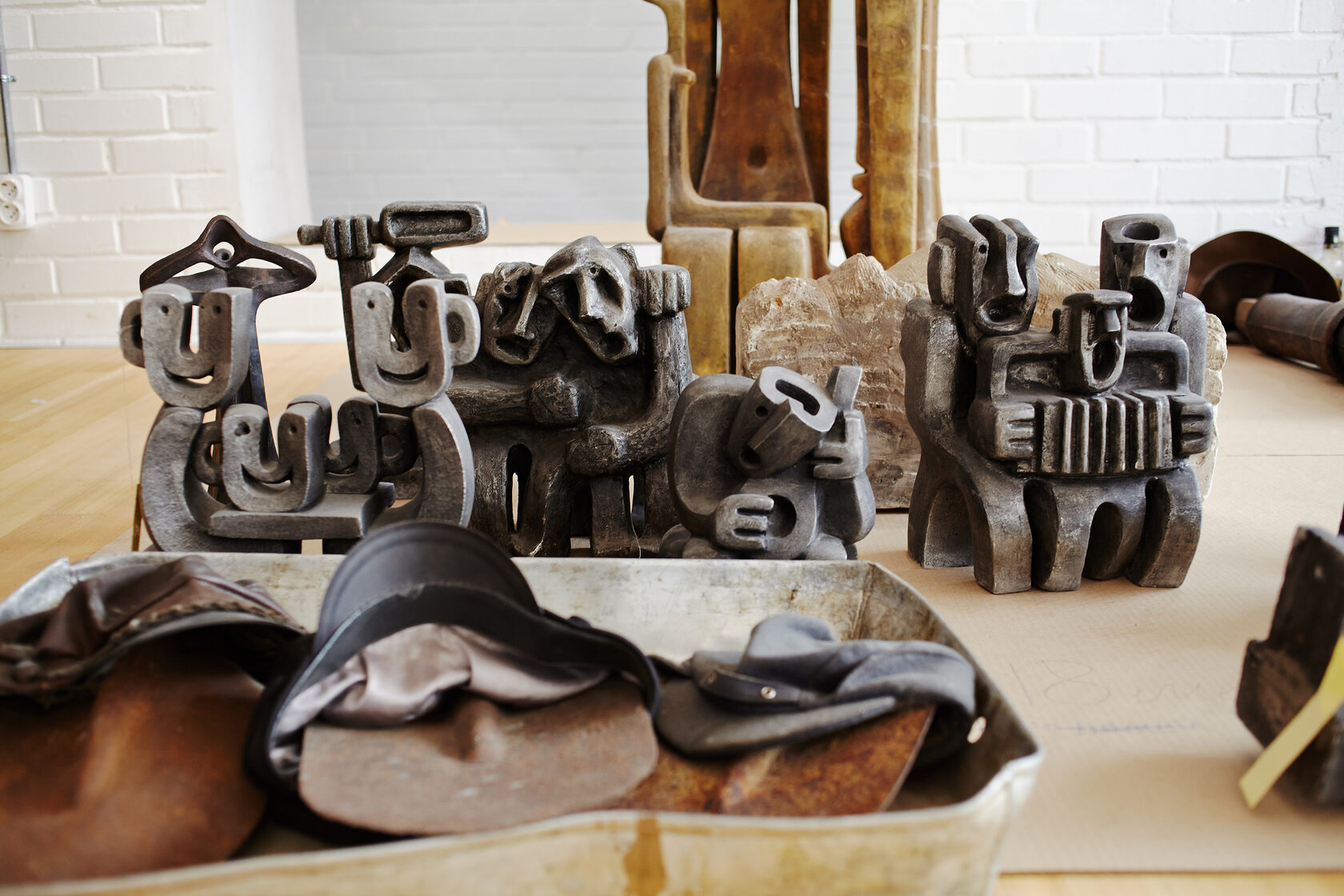
Combinatorics principle
The project's tour schedule implies the inclusion of exhibition areas of different configurations and sizes in the exhibition plan. The main task in developing the combinatorics of the project was to create a flexible system that allows, without the manufacture of additional structures and construction work, to create an exhibition space that will complement art and the visitor. Most of the exhibition halls were not equipped with special systems for replacing art, and the special technology in which most of the author’s works were made did not allow the use of standard fastening elements

Expositional combinatorics
Multimedia equipment and accompanying materials for the project had to be able to be easily replaced and transformed depending on the country where the exhibition is held and the needs of the site. In this regard, modular information structures were developed on the principle of easy change of materials, and the formats and printing technology used can be implemented in each country of presence
Construction process
The main objective in the design of the mobile project was wear resistance, lightness and compactness of the structure to optimize the transportation of the project between cities. The next important element in assessing the effectiveness of the architectural solution was the speed of installation work. In rare cases, the exhibition installation time exceeded 24 hours.
The designs were made from 5 mm. aluminum coated with special wear-resistant paint. This decision is justified by the fact that the weight of the largest exhibition element does not exceed 25 kg. and does not require special equipment for unloading structures. To reduce installation time, all elements are connected without the use of fittings. To ensure the safety of works of art, special fasteners were developed for each work, which do not need to be removed during transportation
The designs were made from 5 mm. aluminum coated with special wear-resistant paint. This decision is justified by the fact that the weight of the largest exhibition element does not exceed 25 kg. and does not require special equipment for unloading structures. To reduce installation time, all elements are connected without the use of fittings. To ensure the safety of works of art, special fasteners were developed for each work, which do not need to be removed during transportation
The team developed a modular exhibition set that includes five typologies. Exhibition table for 4–8 exhibits (medium format sculpture), Exhibition pylon for planar works. A pylon for graphic accompanying materials, a podium for large-format sculpture and a special stand for touchscreen tablets. each module has the ability to be joined and combined with other parts of the exhibition to create a different compositional structure
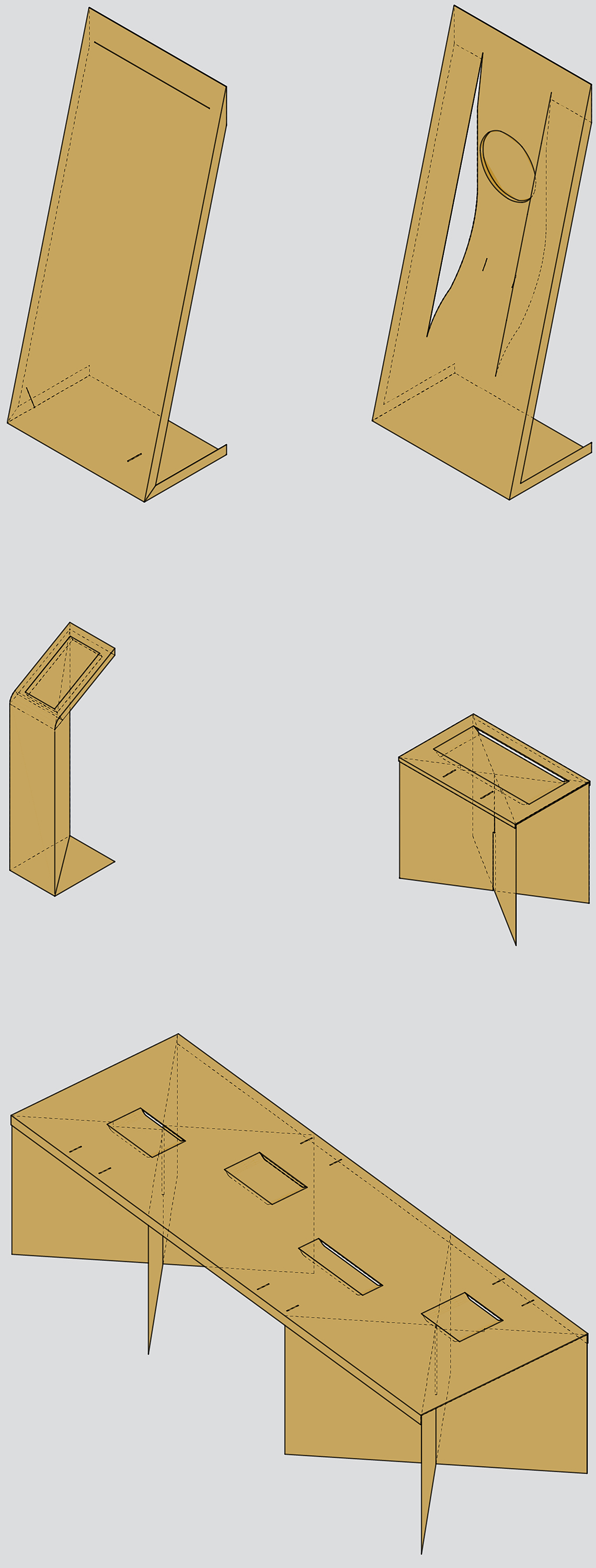

Main аrchitectural forms catalog
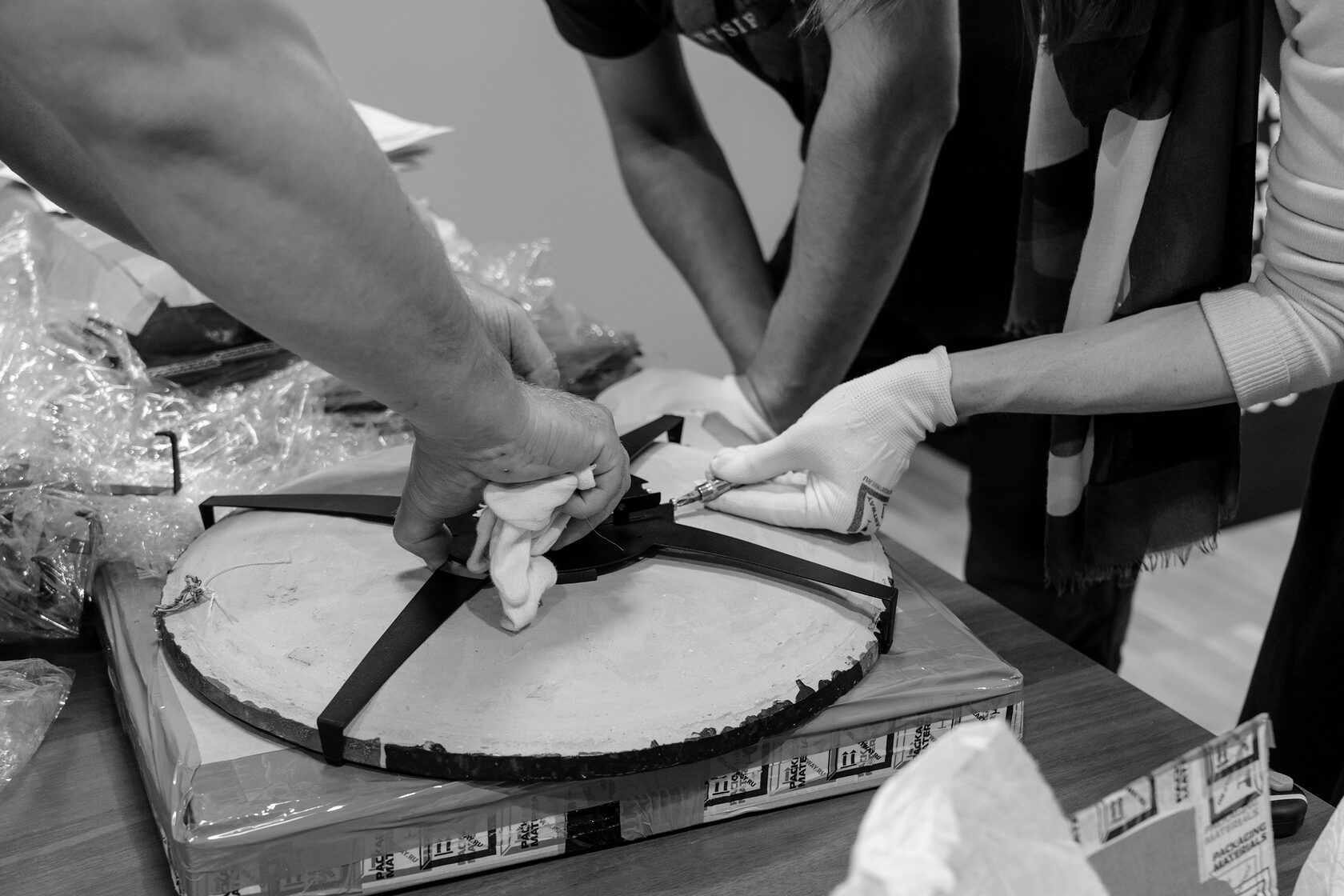
Installation of special fasteners for ceramic work
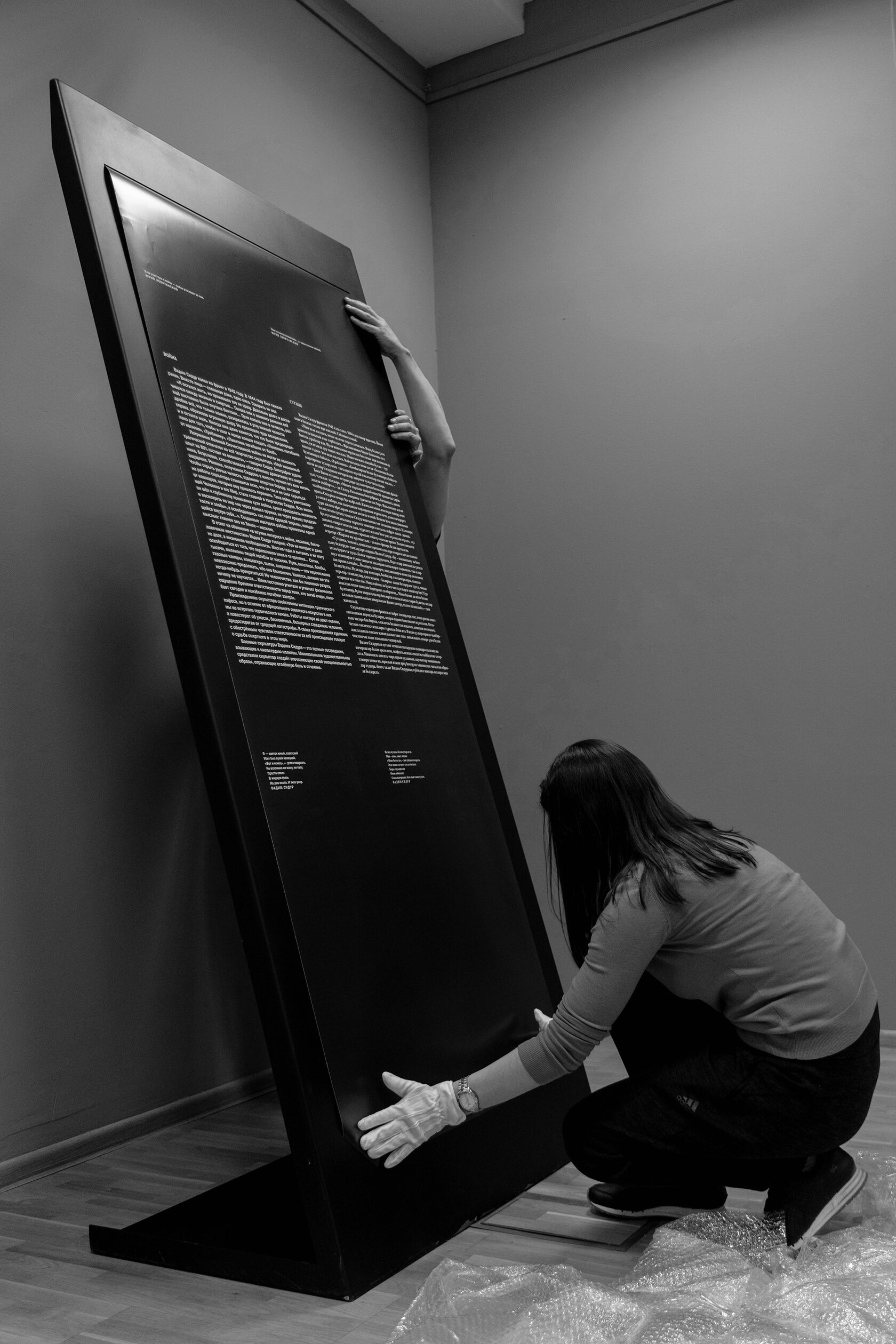
Principle of installation of accompanying materials
Related projects
year
type
name




